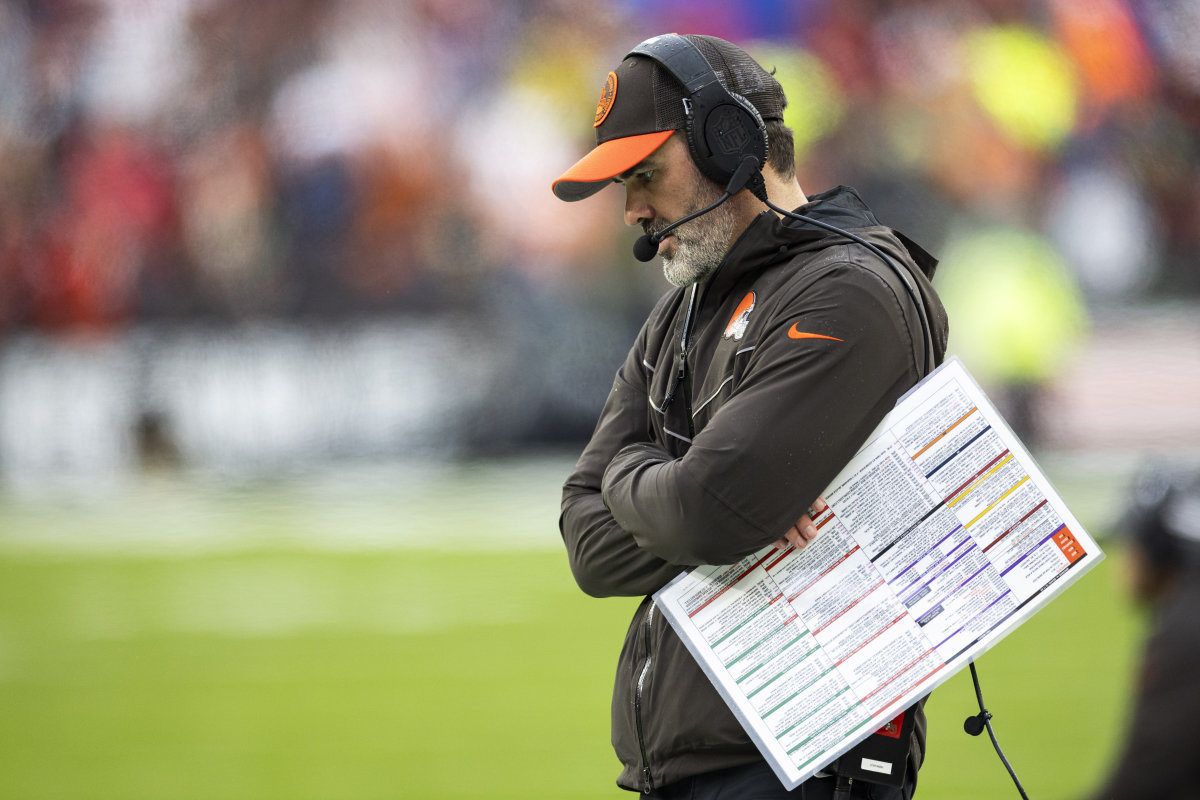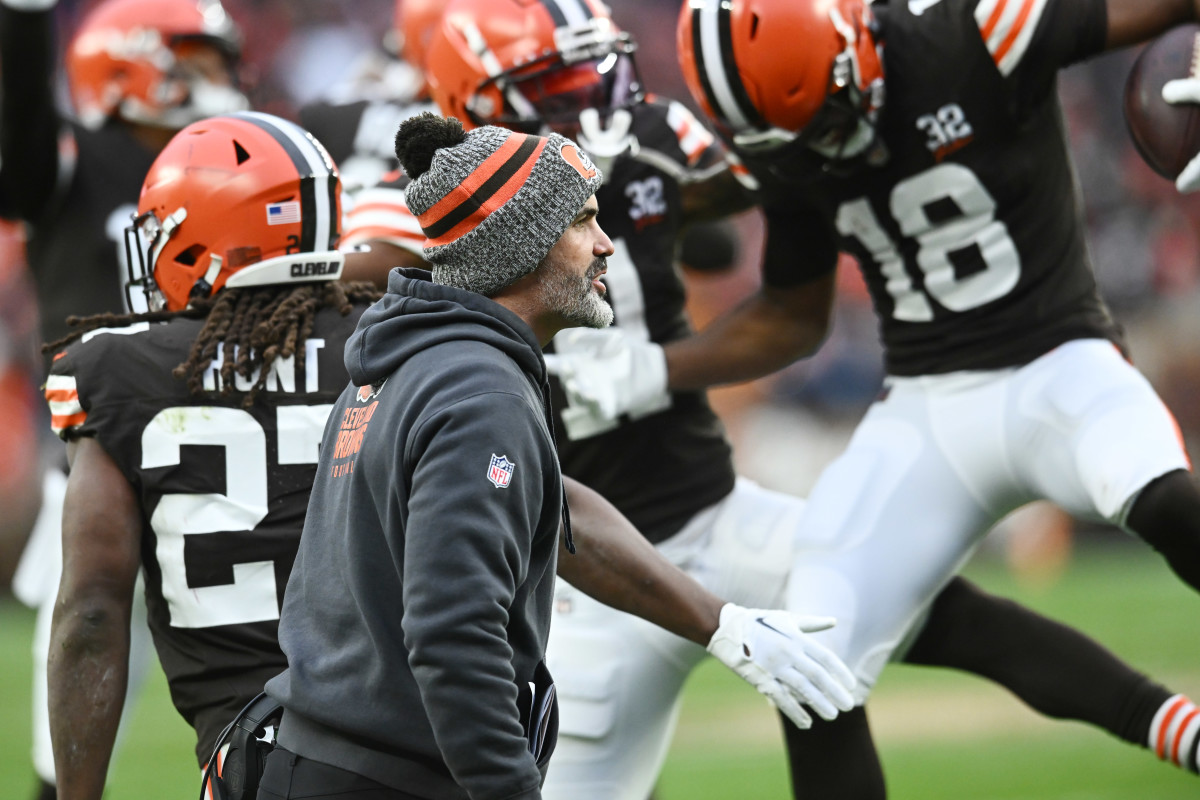Thanks to Kevin Stefanski, the Browns Are No Longer Defined by Their Past Losing
Here is a bit of notable minutiae: Before Kevin Stefanski, the last Browns coach to achieve multiple seasons with more wins than losses was … Marty Schottenheimer, from 1986 to ’88. This is one of those factoids that places decades of confusion, misery and incompetence into a neat little display, allowing us all to properly gauge its true size and scope.

And, perhaps more than that silly jersey with all the names of the Browns’ starting quarterbacks since 1999, it explains why Cleveland became synonymous with the worst of the NFL. Post Bill Belichick, after the team’s rebirth as a franchise, there was this engrained cycle of hiring the absolute worst coach possible, pairing that coach with a general manager who had vastly different visions, and layering them both underneath an owner who could, from time to time, have a third idea that was different from the misaligned GM and coach.
Which is why this factoid is so important. Stefanski has emerged as the primary reason why Cleveland may no longer be defined by its past (at least when it comes to a large percentage of its roster and coaching staff; there is still a front office that is hoping and praying a $230 million quarterback eventually arrives). After edging the Bears on Sunday, the Browns clinched a winning season and placed themselves in a situation where, according to The New York Times’s playoff simulator, the team has a 90% chance of making the postseason.
The Browns began building for this moment in 2016 following the firing of Mike Pettine. Since that time, the franchise has picked No. 1 twice; Cleveland has taken a swing at securing its left tackle of the future, as well as building out its offensive line, and its lockdown cornerback around which to construct a defense; and it also made a trade that was meant to secure the team’s quarterback for the next half-decade.
The results of all that were mixed. Baker Mayfield is no longer a member of the Browns but may be leading the Buccaneers to the playoffs this season. Myles Garrett is one of the five best players in the NFL. Denzel Ward is pretty good, and their offensive line, when healthy, is great. Fifth-round guard Wyatt Teller was a savvy pickup in a trade after his rookie season. Deshaun Watson has been injured or rusty for a majority of his time with the Browns. These picks were made by various constructions of the front office, with and without Sashi Brown, John Dorsey and Andrew Berry. There was either heavy input, or not that much, from Paul DePodesta depending on what time period of the rebuild we’re referring to.
But the one constant has been Stefanski, who showed up in 2020 ahead of the COVID-19 season, bonded a team virtually, led it to the playoffs, and, despite missing the postseason victory over the Steelers with COVID-19, was obviously instrumental in putting together all of the work that led to one of the most monumental post–Cold War moments for the franchise.
Stefanski was always the candidate Cleveland wanted, dating back to the 2020 hiring cycle and perhaps even in ’19 when the club was backed into hiring Freddie Kitchens (then the Browns’ upstart offensive coordinator who had begun to get the most out of Mayfield following the ouster of Hue Jackson). Since that hiring cycle, Cleveland has also interviewed the likes of Mike McCarthy, Josh McDaniels, Robert Saleh, Brian Daboll, Dan Campbell, Greg Roman, Eric Bieniemy and, coincidentally, Jim Scwhartz, among others. Like the Browns’ drafts, a mix of good and bad—though it would be a fascinating experiment to see if any of them would have been able to spin the amount of plates that Stefanski has while balancing on this head coaching unicycle.
This year has hammered that home. Sans Nick Chubb, Jack Conklin, Jedrick Wills and the rest of Cleveland’s injured reserve list, which is now large enough to field one complete side of the ball with a handful of substitutes, the Browns have beaten the best team in the NFL and notched wins against each of their division rivals, all of whom have a chance of reaching the playoffs.

In moments like this, while one could argue it underlines the entirety of a team’s process, I think it simply shows how the Browns finally got the one major question right: Who can coach this football team and win?
A process win doesn’t involve plucking Joe Flacco from South Jersey, stashing him on the practice squad and designing a series of game plans that let him rip, even through tipped picks and bad breaks. We didn’t talk about process when Sean Payton was juggling Taysom Hill, Jameis Winston and Teddy Bridgewater. We haven’t talked about process during the Tommy DeVito frenzy, the anonymously quarterbacked Vikings’ surge of 2023 or the miraculous Nick Foles run to the Super Bowl (at least not until years later when the Eagles’ strength as an organization became clear). We talked about how brilliant the play-callers and scheme designers were. We talked about how amazing it was that the person who has to stand up in front of the room every day was able to steer the team through its inevitable fork-in-the-road injury, departure, controversy, or what have you.
In that way, Stefanski has earned his pat on the back. Singularly. As we mentioned above, there aren’t many like him in Browns’ history now.
Editors’ note, Dec. 17 at 8:45 p.m. ET: An earlier version of this story stated that the Browns drafted Wyatt Teller. In fact, Cleveland traded for him after his rookie season.
